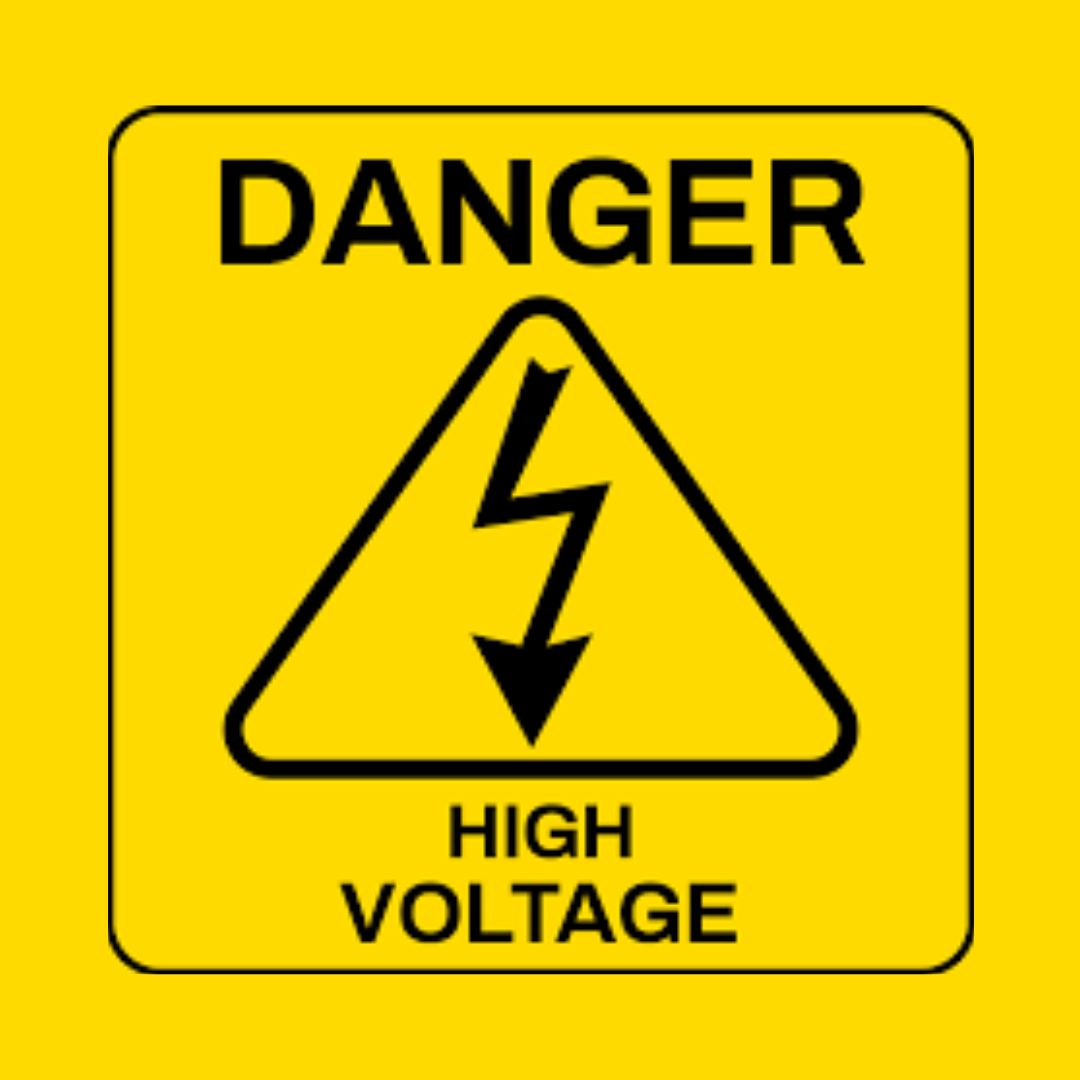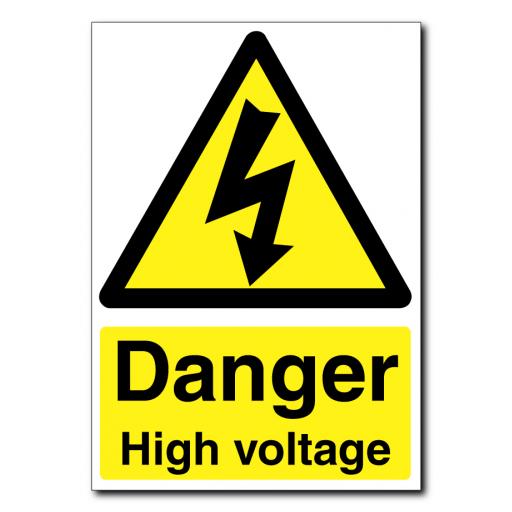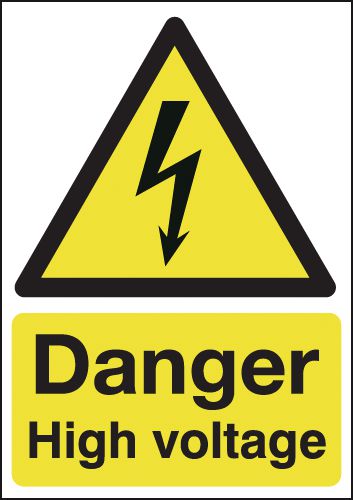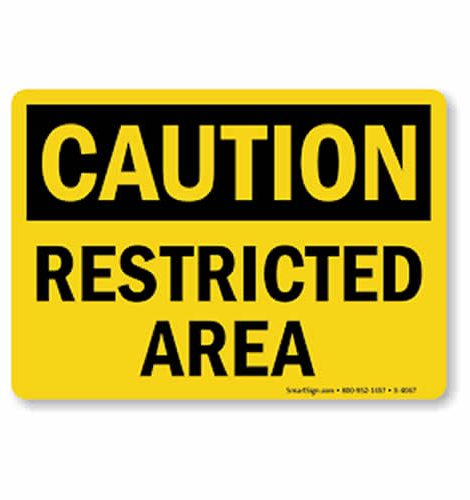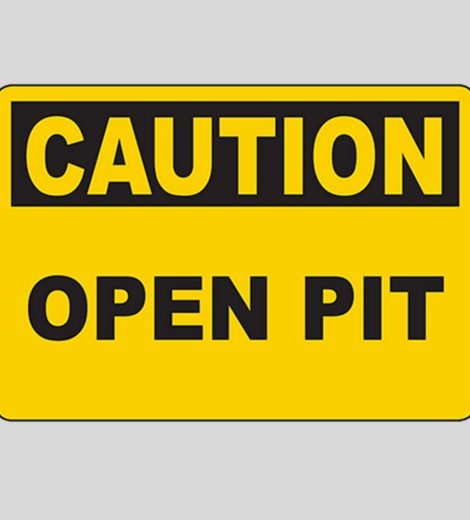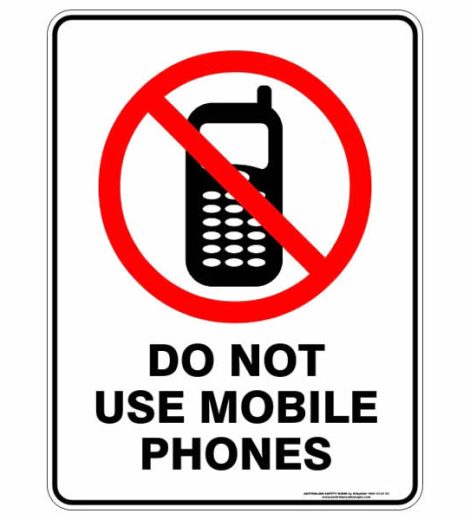Description
Introduction
Electricity is an essential part of modern life, but it also presents significant hazards when not handled correctly. One of the most critical safety measures in electrical environments is the use of warning signs, particularly the Danger: High Voltage Sign. This sign serves as a visual cue to warn people of the risks associated with high-voltage electrical equipment and areas. Whether in industrial settings, power plants, or construction sites, these signs are indispensable for preventing accidents and ensuring compliance with safety regulations.
Eloquent Sign, a leading signage company based in Lagos, provides high-quality Danger: High Voltage Signs that meet safety standards and enhance workplace security.
What is a Danger: High Voltage Sign?
A Danger: High Voltage Sign is a warning sign that alerts individuals to the presence of high-voltage electricity in a specific area. These signs are typically found in locations with electrical installations, transformers, power lines, and substations. The purpose of these signs is to prevent unauthorized access, minimize the risk of electric shocks, and ensure safety compliance.
Common Features of a Danger: High Voltage Sign
- Bright Colors – Often designed in yellow with black text or symbols for high visibility.
- Universal Symbols – The lightning bolt symbol is a widely recognized representation of electrical hazards.
- Bold Lettering – Ensures easy readability from a distance.
- Durable Material – Often made from aluminum, plastic, or reflective materials for outdoor and industrial use.
- Regulatory Compliance – Adheres to safety standards set by OSHA, ANSI, and other regulatory bodies.
Importance of High Voltage Warning Signs
1. Prevents Electrical Accidents
High-voltage electrical areas can be extremely dangerous, even fatal. Danger: High Voltage Signs help alert workers and visitors about potential hazards, reducing the risk of accidental contact with live electrical components.
2. Compliance with Safety Regulations
Regulatory agencies like the Occupational Safety and Health Administration (OSHA) and the National Electrical Code (NEC) require workplaces to have proper electrical safety signs. Failure to comply can result in penalties, fines, and increased liability.
3. Protects Workers and General Public
High-voltage areas are not just hazardous for workers but also for passersby. Clearly displayed warning signs help in keeping unauthorized individuals away from restricted electrical zones.
4. Enhances Workplace Safety Culture
Consistent use of Danger: High Voltage Signs fosters a strong safety culture within an organization. Employees become more aware of electrical hazards and take necessary precautions.
Where to Place a Danger: High Voltage Sign
1. Electrical Substations
Substations handle high-voltage power distribution and pose serious electrocution risks. Warning signs should be placed at entry points and around the perimeter.
2. Transformer Boxes
Transformers convert high voltage into usable electricity, making them potential hazard zones. Proper signage prevents accidental contact.
3. Construction Sites
Temporary electrical setups at construction sites require visible danger signs to prevent electrocution and injuries.
4. Industrial Facilities
Manufacturing plants and factories often have high-voltage machinery and circuits. Signage ensures workers stay alert to potential dangers.
5. Power Poles and Transmission Lines
Overhead power lines carry extreme voltage, making it crucial to install warning signs at accessible points.
Compliance Standards for High Voltage Signs
OSHA (Occupational Safety and Health Administration)
- OSHA mandates that electrical hazard signs be clearly visible and placed in areas where electrical dangers exist.
- Signs should have readable text and use high-contrast colors for visibility.
ANSI (American National Standards Institute)
- ANSI Z535 safety standards specify the design, wording, and placement of electrical hazard signs.
- The standard requires that warning signs use symbols and words that are universally understood.
IEC (International Electrotechnical Commission)
- IEC standards apply to global electrical safety signage, ensuring international consistency in warning symbols and messages.
Choosing the Right High Voltage Sign from Eloquent Sign in Lagos
When selecting a Danger: High Voltage Sign, consider the following factors:
1. Material Quality
Eloquent Sign offers durable signage materials such as:
- Aluminum Signs – Ideal for outdoor and industrial applications.
- Plastic Signs – Lightweight and suitable for indoor electrical panels.
- Reflective Signs – Ensures visibility in low-light conditions.
2. Customization Options
- Text and Language Options – Available in multiple languages for enhanced understanding.
- Size Variations – Different dimensions based on location requirements.
- Branding – Custom logo inclusion for company identification.
3. Installation Methods
- Wall-Mounted – Suitable for indoor and flat surface applications.
- Pole-Mounted – Effective for outdoor areas and high-visibility zones.
- Magnetic Signs – Ideal for temporary electrical hazard indications.
Maintenance and Longevity of High Voltage Signs
1. Regular Inspections
- Periodic checks ensure signs remain visible and undamaged.
- Replace faded or worn-out signs to maintain compliance.
2. Cleaning and Care
- Wipe signs with a damp cloth to remove dirt and grime.
- Use weather-resistant coatings to protect against fading and corrosion.
3. Proper Placement
- Ensure signs are positioned at eye level for maximum effectiveness.
- Avoid placing signs in obstructed areas.
Conclusion
Danger: High Voltage Signs are essential for protecting lives, preventing accidents, and ensuring compliance with safety regulations. Eloquent Sign in Lagos provides high-quality, customizable, and durable signage solutions that meet industry standards. Investing in the right high-voltage warning signs ensures a safer work environment and minimizes electrical hazards.
For top-quality Danger: High Voltage Signs, contact Eloquent Sign today and safeguard your workplace from electrical risks!

